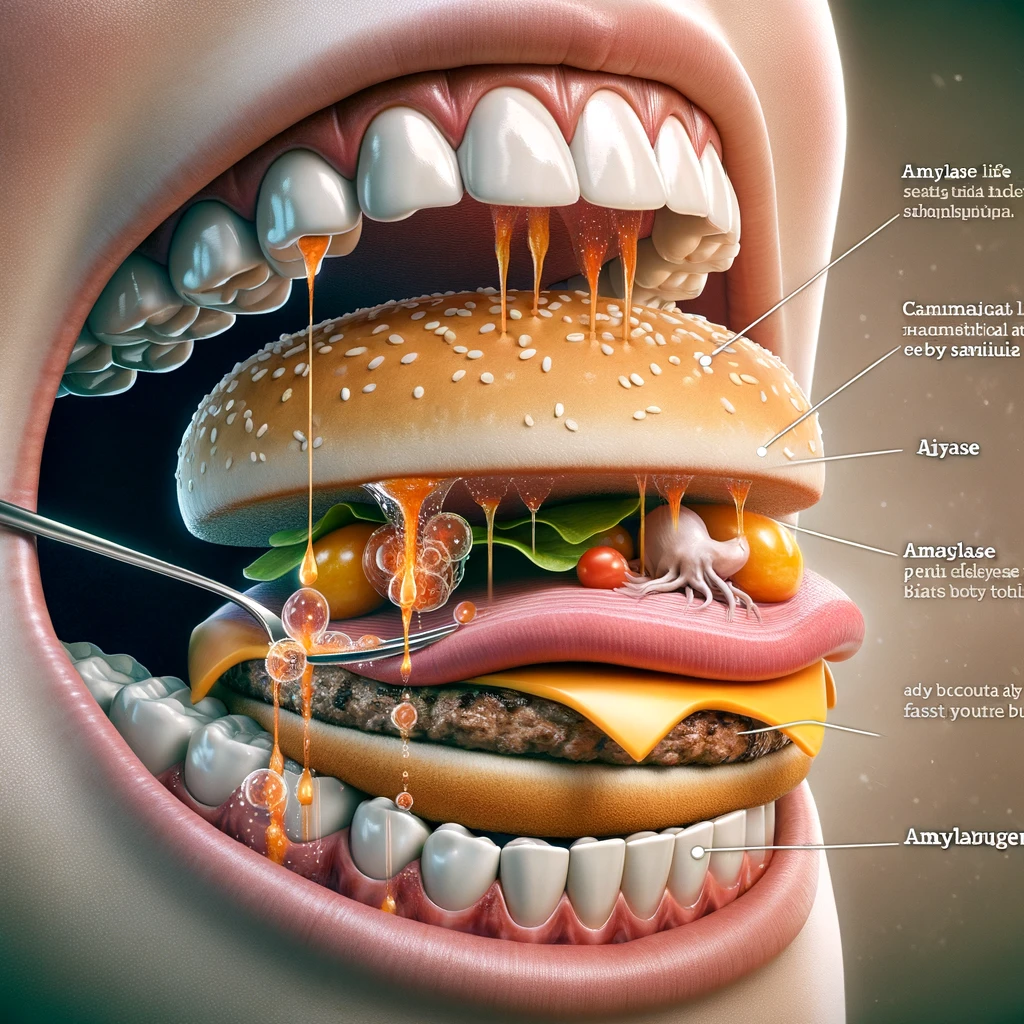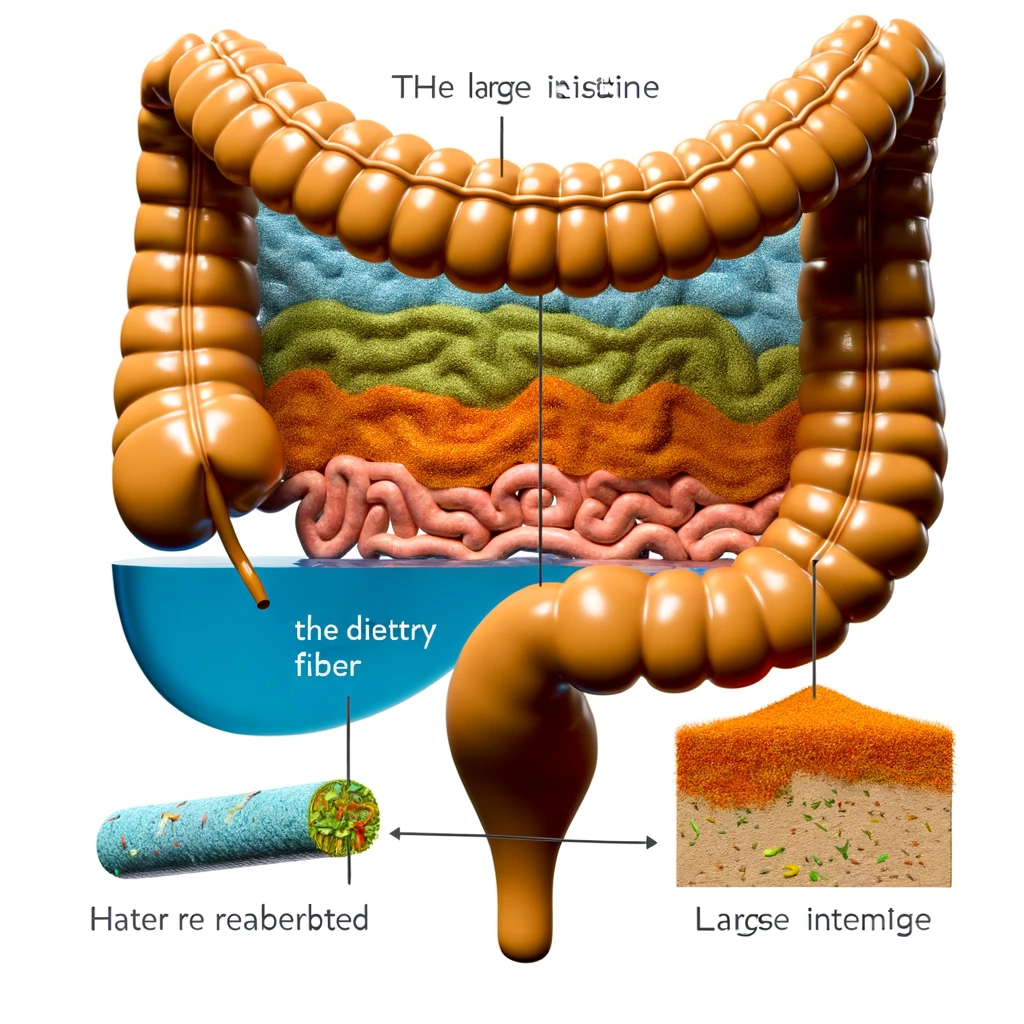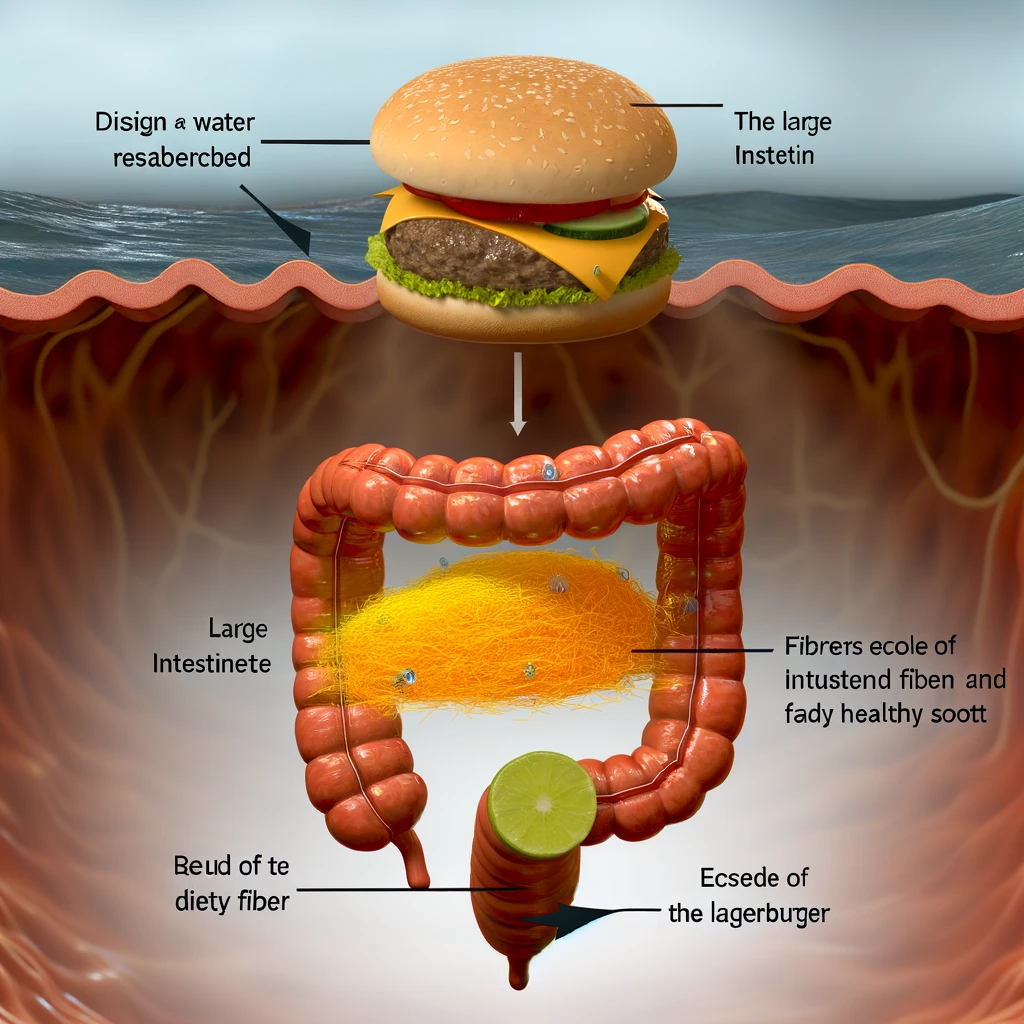From First Bite to Final Absorption: Unraveling the Complex Process

The act of eating, especially when it involves a delicious cheeseburger, is not just a sensory delight but also the beginning of a fascinating journey through the human digestive system. This journey is a complex process involving mechanical and chemical breakdowns of food, nutrient absorption, and waste elimination. Let’s delve into the digestive odyssey of a cheeseburger, from the moment it enters the mouth until it exits the body.
The Starting Point: Oral Digestion
The digestive voyage begins in the mouth, where the cheeseburger encounters the first line of digestive aids: the teeth and saliva. Chewing breaks the food into manageable pieces while saliva, containing enzymes like amylase and lipase, starts the chemical breakdown of carbohydrates and fats found in the cheeseburger’s bun and toppings.
Stomach: The Acidic Mixer
Swallowed food travels down the esophagus to reach the stomach, an organ equipped with enzymes and hydrochloric acid. Here, the protein-rich components of the cheeseburger, such as the beef patty and cheese, undergo further breakdown. The stomach’s acidic environment not only aids in digestion but also serves as a barrier against pathogens.

Small Intestine: The Nutrient Absorber
As the partly digested cheeseburger enters the small intestine, it encounters a cocktail of enzymes from the pancreas and bile from the liver. Amylase continues the breakdown of carbohydrates, while proteases tackle proteins, breaking them down into amino acids. Bile plays a crucial role in emulsifying fats, making them easier to digest. The small intestine, lined with villi, is the main site for nutrient absorption. These tiny, finger-like projections efficiently trap and absorb amino acids, simple sugars, and fatty acids, transferring them into the bloodstream.

Large Intestine: Water Reclamation and Fiber’s Role
What remains of the cheeseburger, now stripped of most nutrients and reduced to indigestible matter, enters the large intestine. Here, water is reabsorbed, and the role of dietary fiber becomes evident. While humans lack enzymes to break down fiber, it is crucial for intestinal health and waste formation. Fiber aids in stool formation and promotes healthy bowel movements, highlighting the importance of including fibrous foods like vegetables in one’s diet.
Conclusion: The End of the Road
The digestive journey of a cheeseburger showcases the body’s remarkable ability to extract vital nutrients from food, a process that is both intricate and efficient. It also underscores the importance of a balanced diet that includes fiber for digestive health. Understanding the digestive process not only fascinates but also informs dietary choices, emphasizing the relationship between what we eat and how our body processes it.
Works Cited
This exploration into the digestion of a cheeseburger draws from various sources, including Healthline’s overview of protein digestion, SF Gate’s explanation of carbohydrate digestion, and Body Ecology’s discussion on the digestion of raw vegetables, providing a comprehensive look at the digestive process from start to finish.






